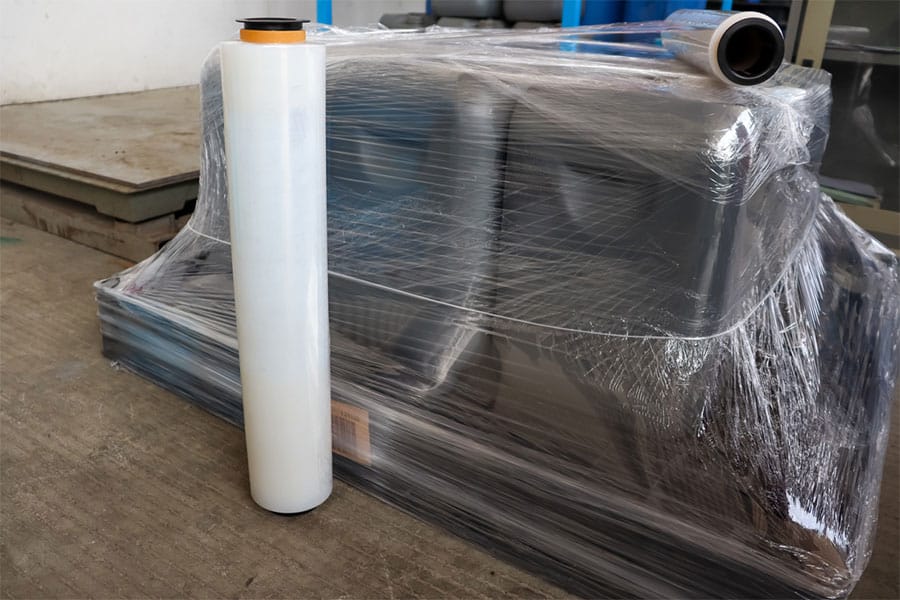Stretch film, or plastic wrap, is an elastic plastic film used to safely secure goods on pallets while minimizing weight and damage to palletized goods. While it may appear as the same plastic wraps you will find in the kitchen, industrial stretch film is far stronger and comes in several different grades for use in all types of packaging and e-commerce shipping.
The Science Behind Stretch Film
Stretch film is a polymer plastic made from recyclable polyethylene products. The primary materials used in stretch film manufacturing are primarily linear low-density polyethylene or LLDPE. LLDPE is a polyethylene polymer produced by a low-pressure polymerization process. It differs from similar products by being more flexible and durable thanks to being made of short branches, which act like chains and can move against one another without tangling, creating a microscopic material that links together like the armor of medieval knights.
Types of Stretch Film
Stretch films come in different shapes and sizes, each with other methods and offering separate benefits depending on your needs. The types of common stretch film types include:
- Cast Stretch: Virtually transparent, cast stretch film makes it easy to see products through the film while being relatively inexpensive and similarly less dense.
- Hand Stretch Roll: Hand-stretched rolls of stretch film are typically applied manually and commonly used by companies with a lower volume of materials for shipping due to the increased need for labor.
- Machine Stretch Film: The inverse of hand-stretched film, machine-stretched film requires a stretching machine far faster than hand-stretched. Machine stretch film is generally used by operations with high volume and the capital to invest in expensive machinery.
- Pre-Stretch Film: Some films can be pre-stretched and make for easier manual applications while utilizing less product for a more environmentally friendly product.
- Color Stretch: While most stretch film products are clear or primarily transparent, color stretch is similarly puncture-resistant and is perfect for international shipments, color coding, and dating inventory.
Benefits of Using Stretch Film
Why use stretch film over another banding product? When you use stretch film, you will find it protects from dust, dirt, and moisture. Furthermore, it adds stability during transport while not adding much weight and makes any tampering or theft evident.
How Stretch Film Compares
Stretch film isn’t the end-all for palletizing products. There are several alternatives, each with its strengths and weaknesses, and the ultimate choice of which is best for you heavily depends on your preferences and particular needs.
- Stretch Film Vs. Shrink Wrap: While they may seem similar on the surface, stretch wrap is far stronger for palletization, and due to its stretchiness creating tension, the film is perfect for shipping. Shrink wrap, on the other hand, shrinks when heat is applied and is easy to apply but ultimately weaker and more useful for small products.
- Stretch Film Vs. Polypropylene Strapping: Polypropylene strapping is a slight step up from stretch film and is used for palletizing light products with short shipping times. However, it is not a very strong material and shouldn’t be used for anything heavy.
- Stretch Film Vs. Polyester Strapping: Stretch film is light, transparent, and often will cover the entire pallet. Polyester strapping, on the other hand, is an incredibly durable and lightweight strapping material with a similar strength to steel. Yet, polyester strapping is exponentially more expensive than stretch film and is often used for heavier loads or those that will be shipped long distances.
From Stretch Film To Strapping Product Needs Contact Strapping-Products.com Today!
Our team at Strapping-Products.com offers a complete selection of strapping products, including stretch film, polyethylene strapping, and much more. To learn more about any of our strapping products, call us today toll free at 888-803-8140.


